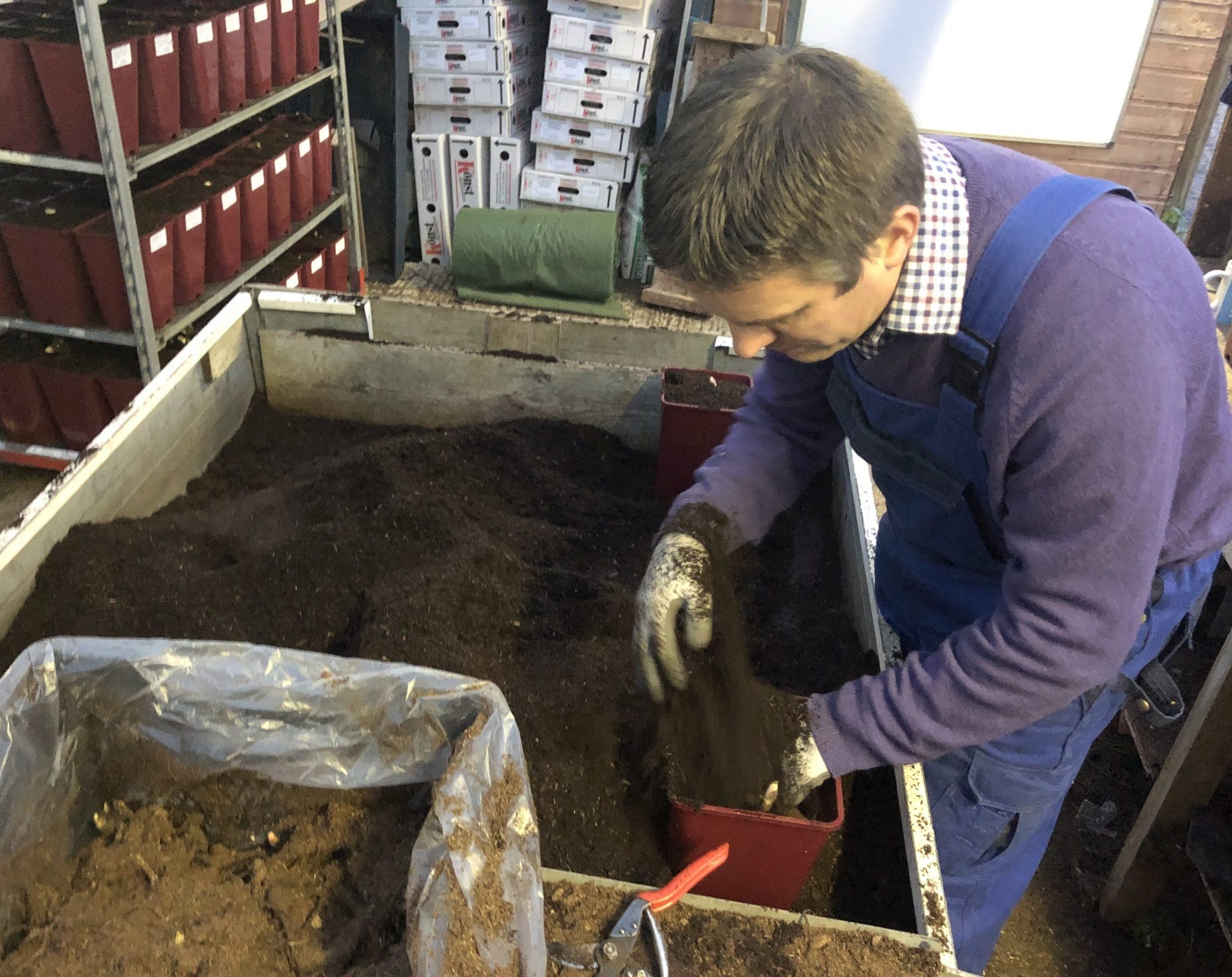How to grow
How to Grow Peonies
Peonies are easy to grow and can live for decades, often 50 years+ in a garden. Peonies are very low maintenance and if you stick to some simple rules for growing them we are sure you will be able to grow your own healthy peonies with no trouble at all.
Peonies are rarely troubled by slugs, snails, deer or rabbits which are all the usual suspects to decimate plants in the garden. Peonies are hardy plants (usually hardy to -20C) requiring no winter protection which makes them perfect additions for cold UK winters. They actually enjoy the drop in temperature in Winter signalling a dormant period where they store their energy in their roots where the buds are already forming and when the sun begins to shine in Spring and the ground starts to warm up, they respond by sending up their leaves and you can watch the buds forming already.
Peonies are also pretty drought tolerant in the Summer but will need plenty of water in the Spring when they are forming their flower buds. Peonies can be grown in containers or in the flower border. It is best to purchase a well-established peony, at least 3- 5 years in maturity, to ensure that it will be at flowering maturity.
Head Nurseryman Alec's Top Tips for growing healthy, happy and pretty perfect peonies in your own garden are the following:
1. Buy a well-established, mature peony plant.
2. Plant in a sunny or part-shaded sheltered position in any free-draining soil.
3. Don’t plant your herbaceous or intersectional peony too deep – ensure the crown is no more than 25mm below the surface.
4. Feed your peony once a year in the Spring, Summer or Autumn.
5. Cut back herbaceous and intersectional peonies in the Autumn; remember Tree peonies respond well to pruning to keep them under control.
6. Water your peony consistently while buds are forming in the Spring but take care not to over water as peonies don’t like having wet ‘feet’ or roots.
Maintenance and Peony Care
Peonies are a low maintenance plant and, once established, rarely suffer from pests and diseases. Most peonies will spread to around 90cm in diameter and grow to about 90cm tall; this means that at some point you might wish to divide your peony. You may also need to provide some plant supports (we recommend our Peony Plant Supports) for taller varieties – remember to position the plant support in the early Spring before your peony has grown too much!
A feed in the Spring or Autumn is often advisable using our Professional Peony Feed.
Once your peony has flowered you may wish to dead-head the blooms. Dead-heading your peony is not essential but it will keep the plant looking tidy and encourage further root growth.
Peonies in Late Summer
Peonies are a perennial which means they start to die back in late Summer (if your plant shows browning on the tips and edges of leaves this could be evidence of some drought experienced in the season, carry on watering your plant) with herbaceous and intersectional varieties dying back completely to the ground and tree or woody peonies keeping their woody stem. The peonies go dormant for the Winter (it could look like they are dead, brown and crispy) and grow new shoots in early Spring. Towards the end of Summer and into the Autumn peonies start turning brown and showing signs of die back on the leaves. This is perfectly normal and the video below shows how to care for your peony during this period.
Potted peonies can start to die back slightly earlier than established garden grown plants. Earlier flowering varieties will usually die back sooner then later flowering varieties so it is not uncommon in Late Summer for some peonies to die back sooner than others.
Do not cut back the foliage – even if it is dead looking – until the Autumn because your peony is still growing below the ground and remember your peony will be forming the flower buds below ground in late Summer and Autumn for the following year. Wait until the leaves are completely brown, while they still have some green visible the plants is still absorbing nutrients and storing this in the roots for the following Spring.
Cutting back of herbaceous and intersectional peonies is easy: simply cut everything back to about 2cm above the ground in Autumn when the peony plant has completely died back and is brown looking. Cutting your peony back will assist with good hygiene and help mitigate against any disease the following year, it is best to burn the cuttings and debris.



